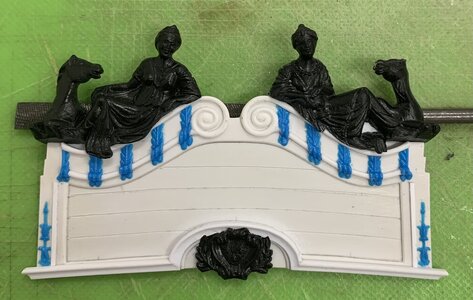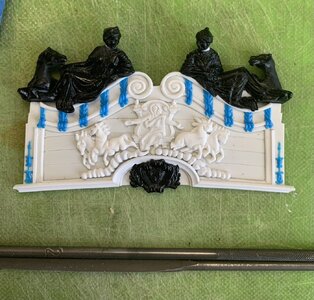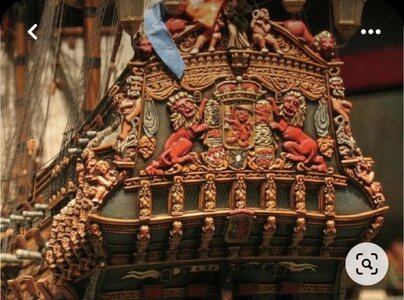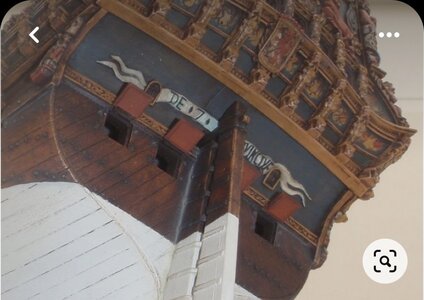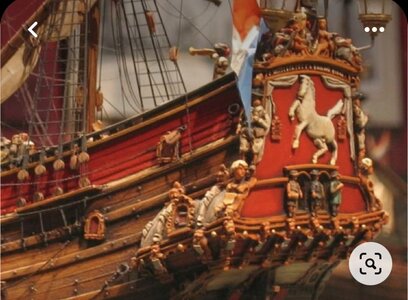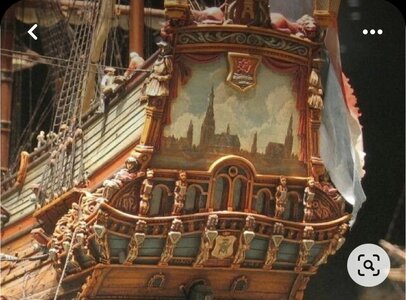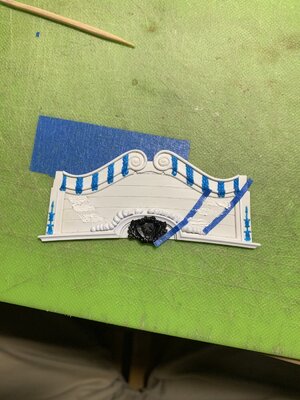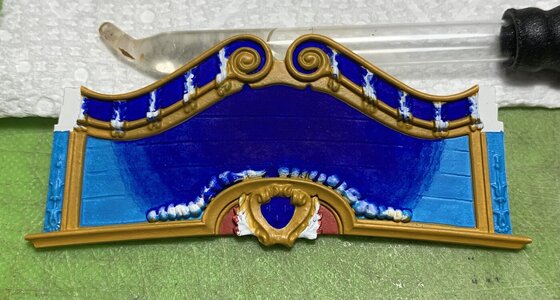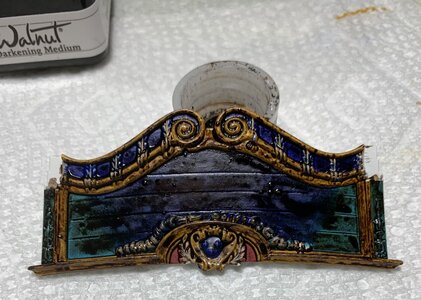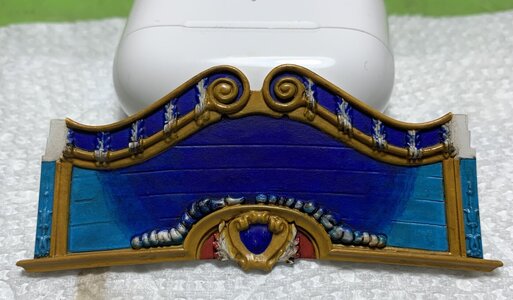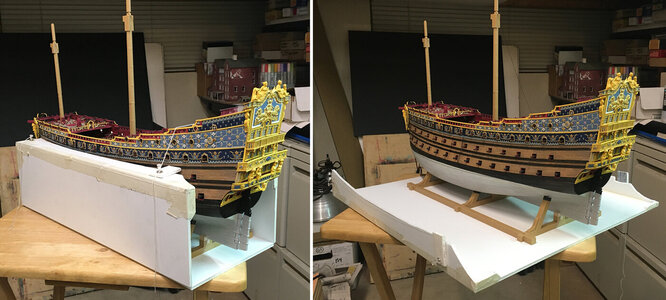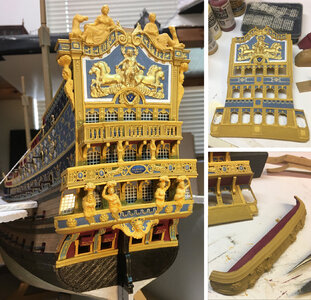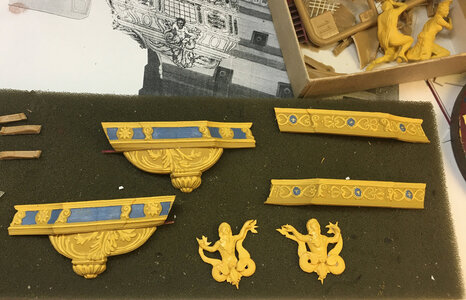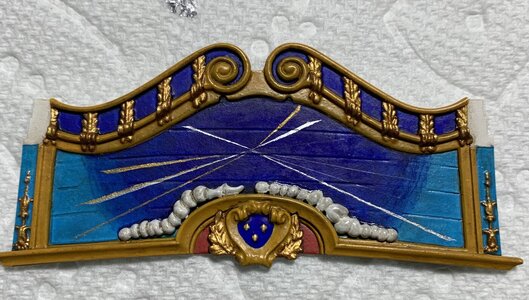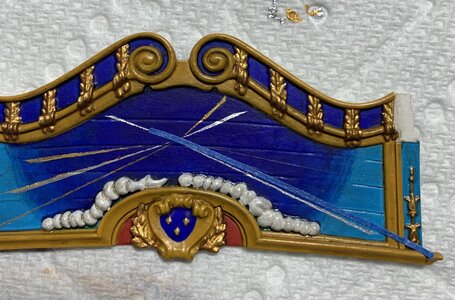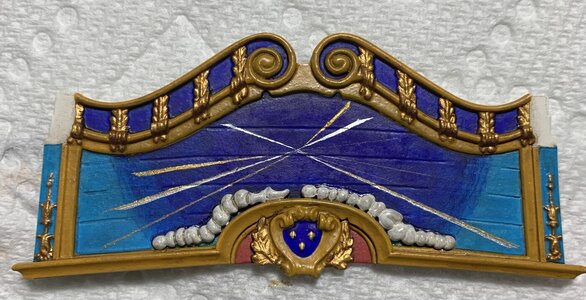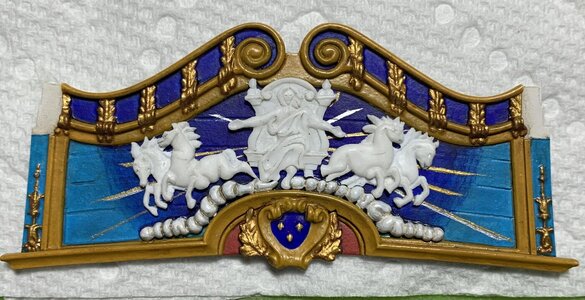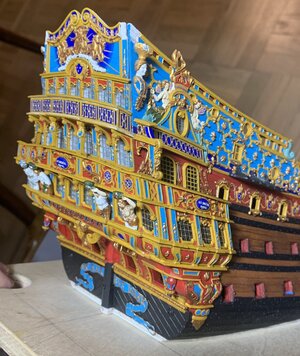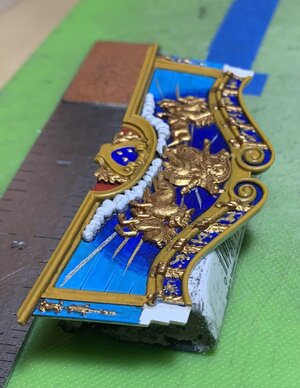I’ve been debating, for a little while, whether I can improve the scale of the Europe and Asia figures to better complement the shortened height of the stern. After the initial round of fitting and back-fill, the figures look like this:
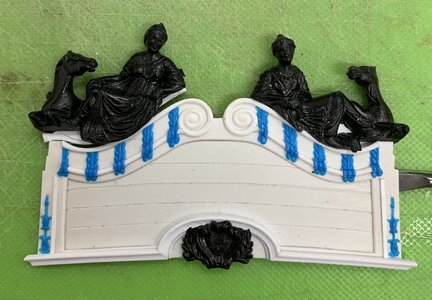
The problem I’m having with this is that these figures were designed to sit atop a taller backboard, and now the horse and camel necks seem a bit too long to me.
Fortunately, I have a number of spare parts with which I can experiment. I had an idea that if you cut the animal heads at the right angle, the kerf loss and clean-up would reduce their head height just enough, and the rejoin could be easily faired. I also, while I’m at it, wanted to see whether I could decapitate the continental figures, themselves, in order to correct the angle of their gaze; they should not be staring out blandly at Soleil Royal’s wake, but instead be lovingly focused on the carving of Apollo, below:
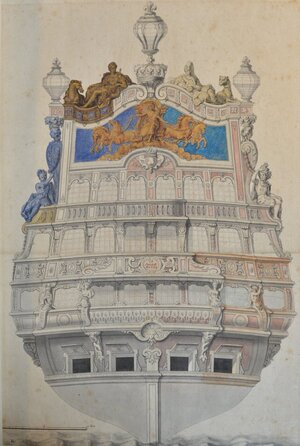
And, so, I put on my surgical gloves and got to work:
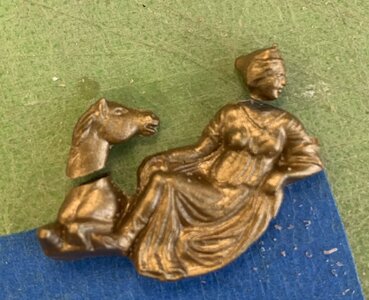
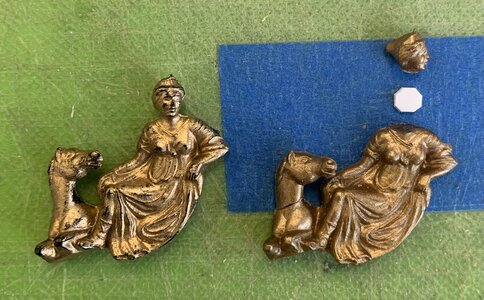
The horsehead is rejoined
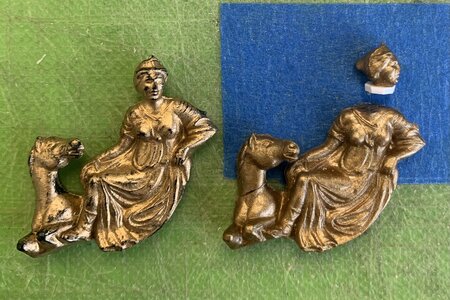
And after filing an angle into her neck insert, so that her chin drops:
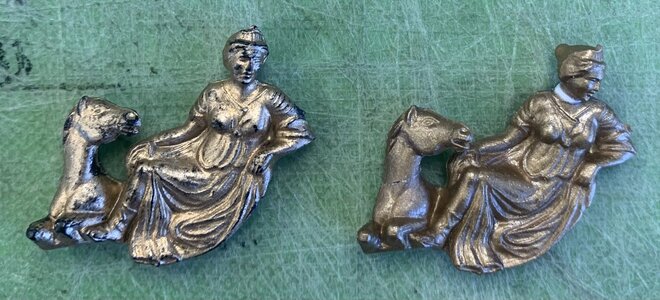

The differences are subtle, but the modifications are not difficult to make. Now that I’ve seen that it can work, it doesn’t seem so risky to modify the figures that I’ve already invested a ton of work into.
I’m still cobbling together the head grating, in the evening. That is all looking very promising.

The problem I’m having with this is that these figures were designed to sit atop a taller backboard, and now the horse and camel necks seem a bit too long to me.
Fortunately, I have a number of spare parts with which I can experiment. I had an idea that if you cut the animal heads at the right angle, the kerf loss and clean-up would reduce their head height just enough, and the rejoin could be easily faired. I also, while I’m at it, wanted to see whether I could decapitate the continental figures, themselves, in order to correct the angle of their gaze; they should not be staring out blandly at Soleil Royal’s wake, but instead be lovingly focused on the carving of Apollo, below:

And, so, I put on my surgical gloves and got to work:


The horsehead is rejoined

And after filing an angle into her neck insert, so that her chin drops:


The differences are subtle, but the modifications are not difficult to make. Now that I’ve seen that it can work, it doesn’t seem so risky to modify the figures that I’ve already invested a ton of work into.
I’m still cobbling together the head grating, in the evening. That is all looking very promising.





 ! Anyway, I was amused...
! Anyway, I was amused...